Photos: Protesters storm the legislature on the anniversary of Hong Kong’s return to China
Hong Kong demonstrators stormed the Legislative Council Monday night (July 1), part of large-scale protests marking the 22nd anniversary of Hong Kong’s handover to China amid escalating public anger over an extradition law.
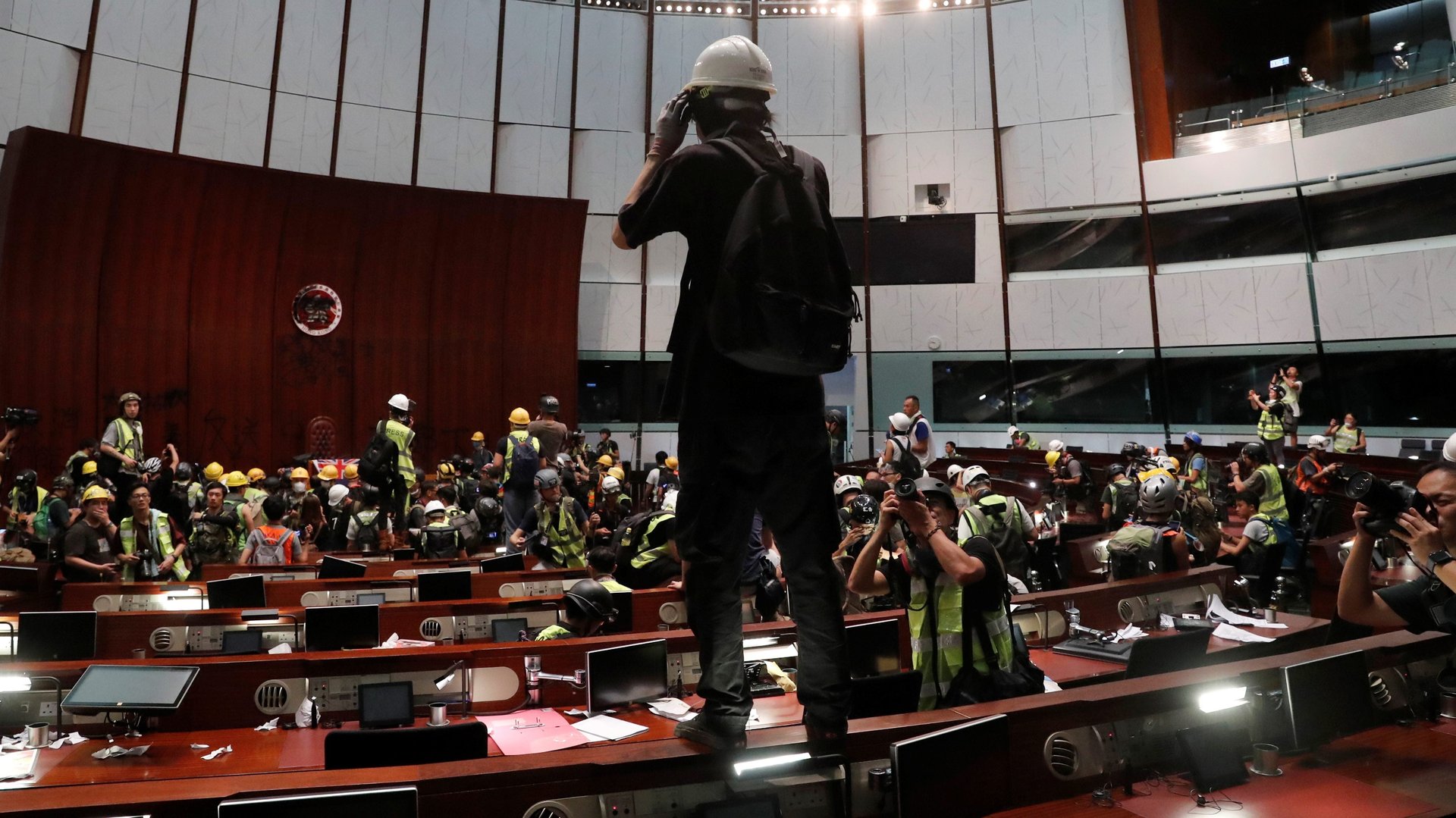

Hong Kong demonstrators stormed the Legislative Council Monday night (July 1), part of large-scale protests marking the 22nd anniversary of Hong Kong’s handover to China amid escalating public anger over an extradition law.
Using steel rods, the demonstrators shattered several of the the building’s glass doors and then pushed through metal shutters to enter inner areas of the building, including the legislative chamber.
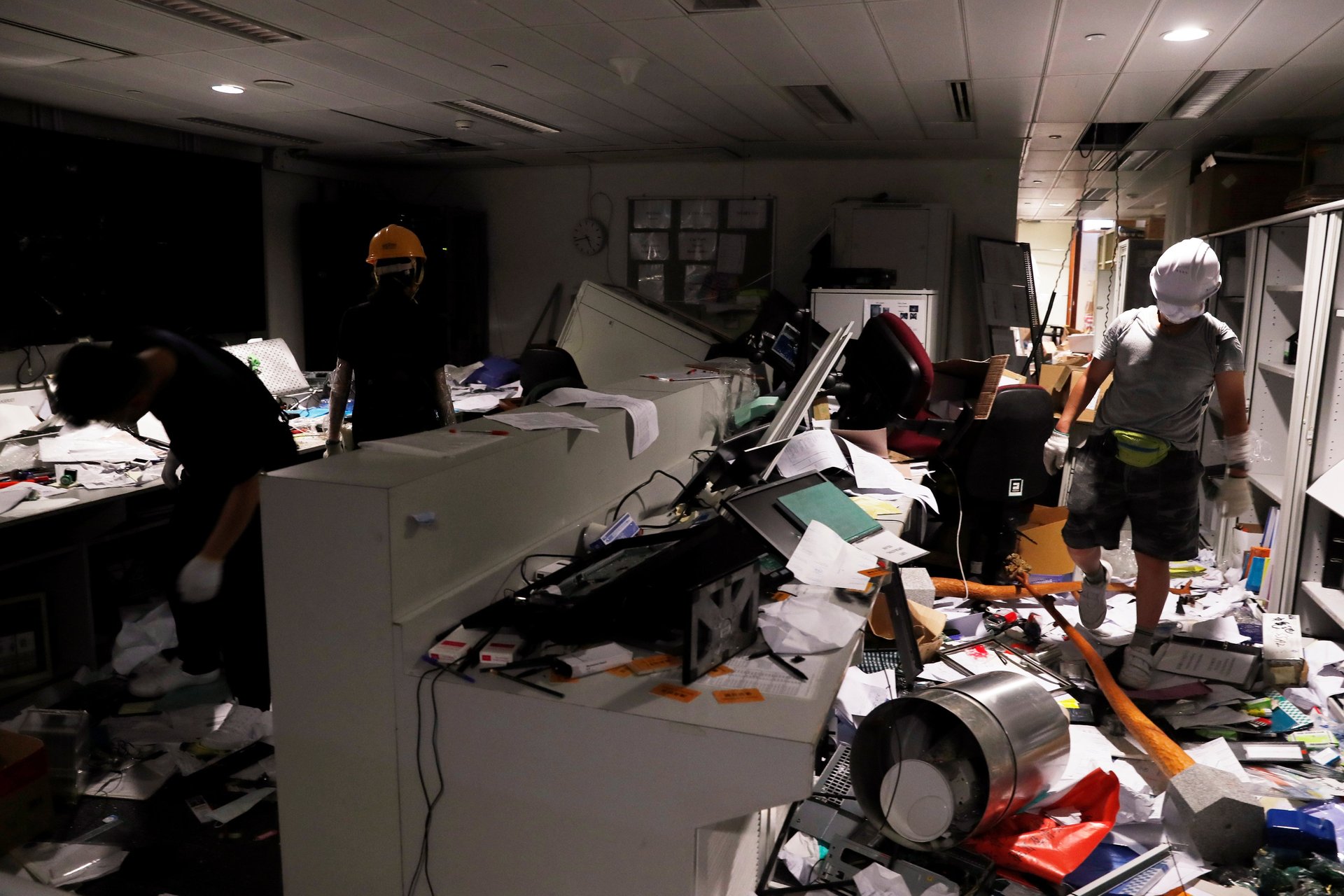
Police who had earlier been stationed inside to stop protesters from entering all the way ceded the building to the control of the demonstrators, who barricaded corridors and sprayed graffiti on the walls.
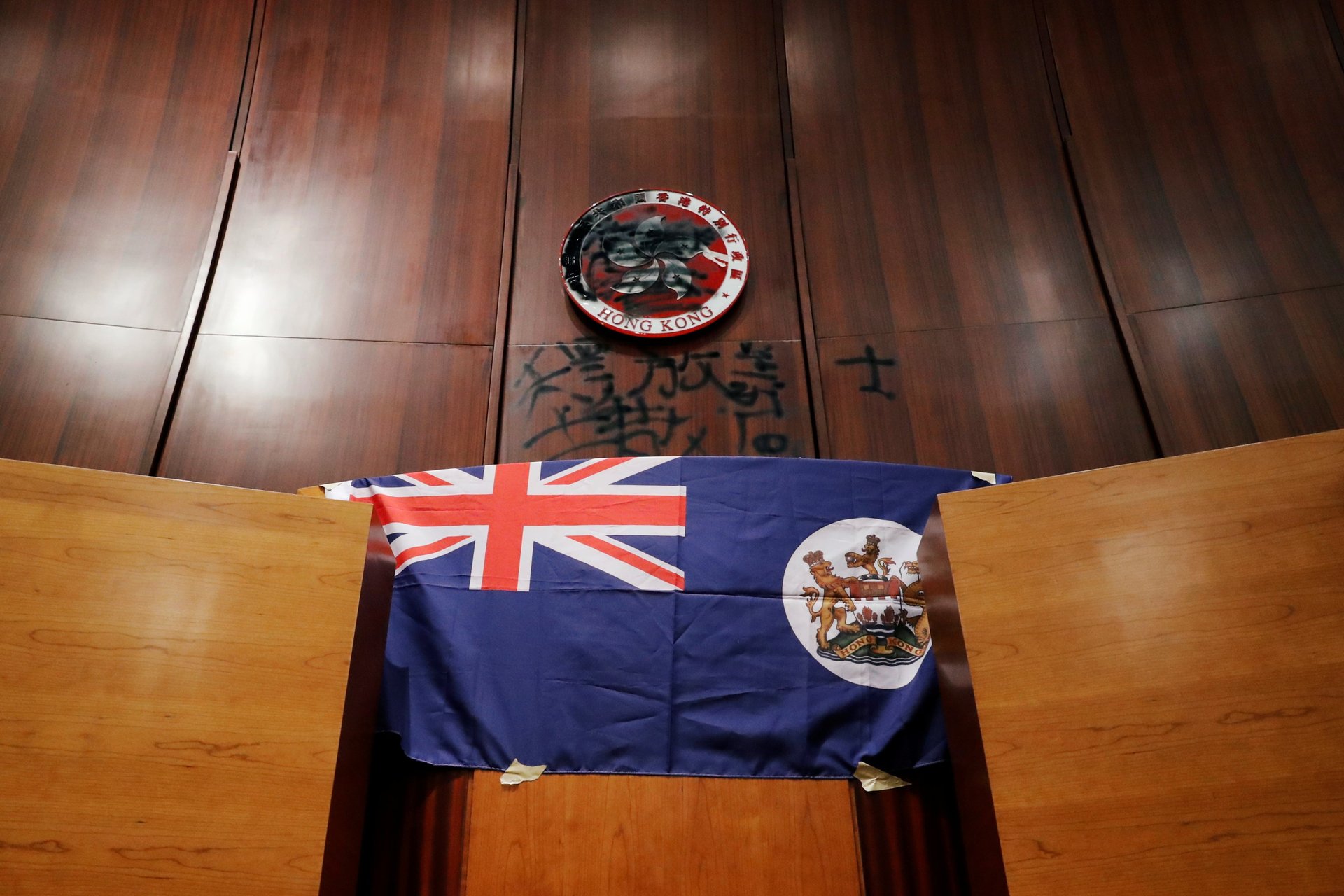
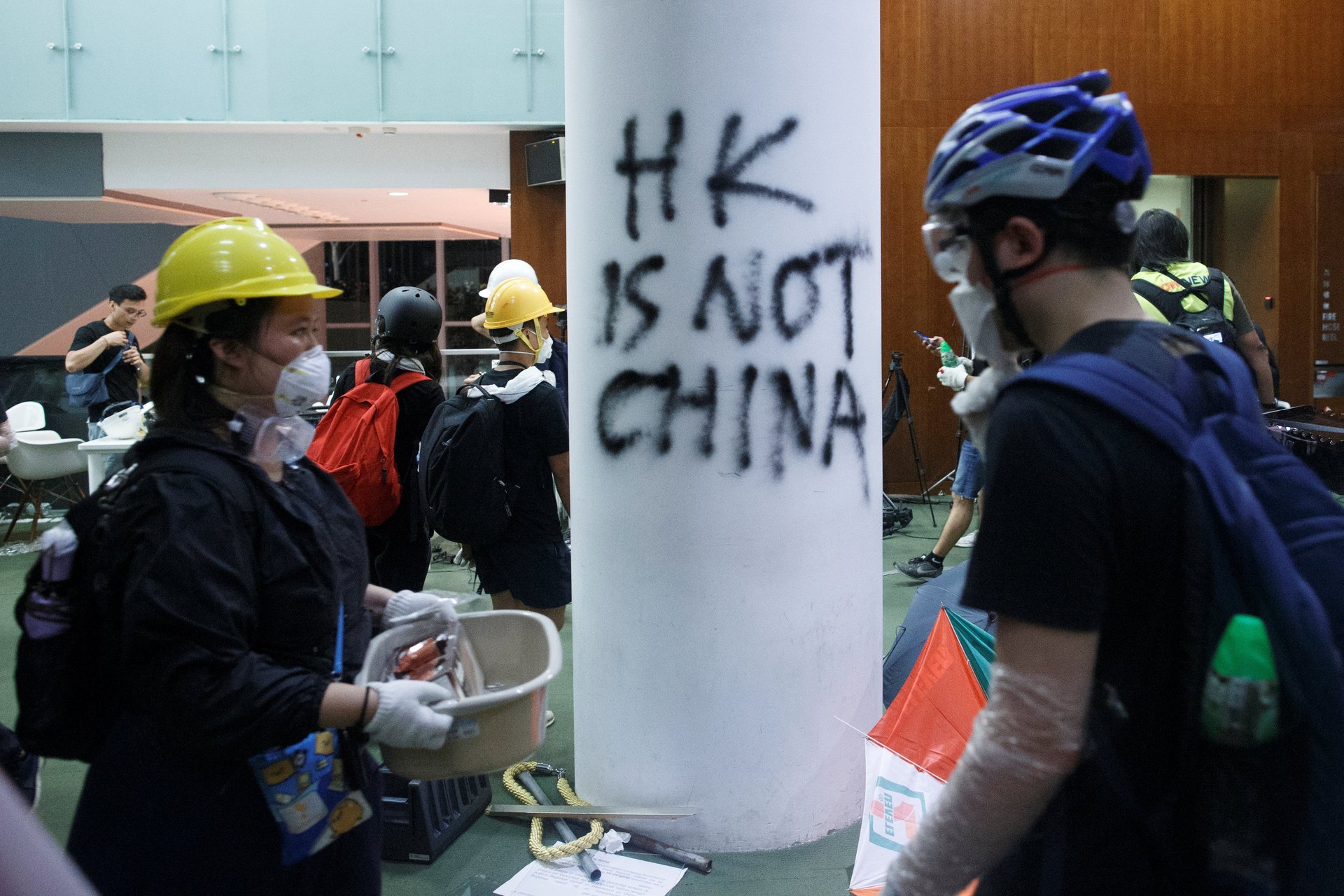
Crowds poured into the area into the evening, and formed long supply lines to pass equipment down to the frontline of protesters facing off against riot police.
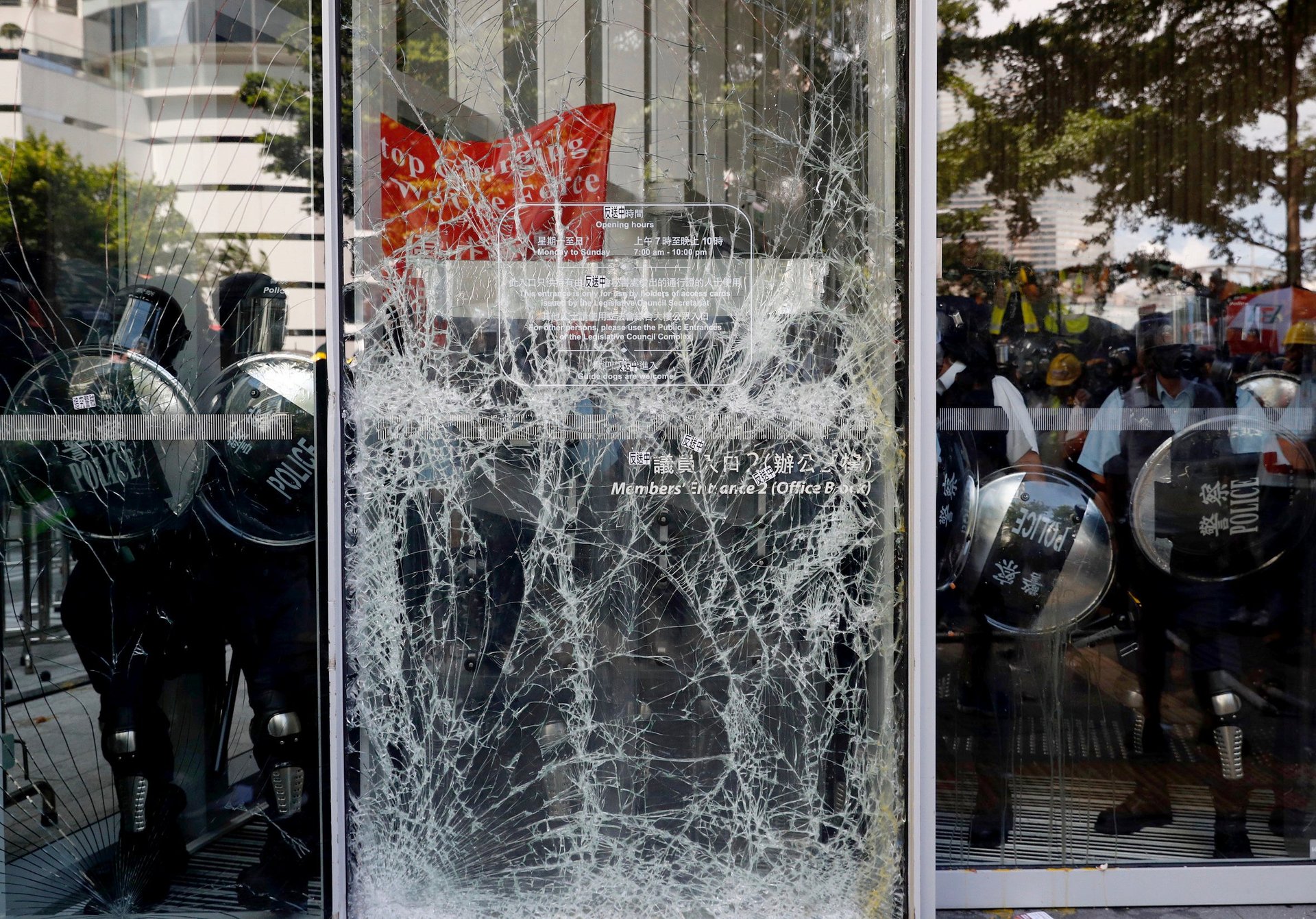
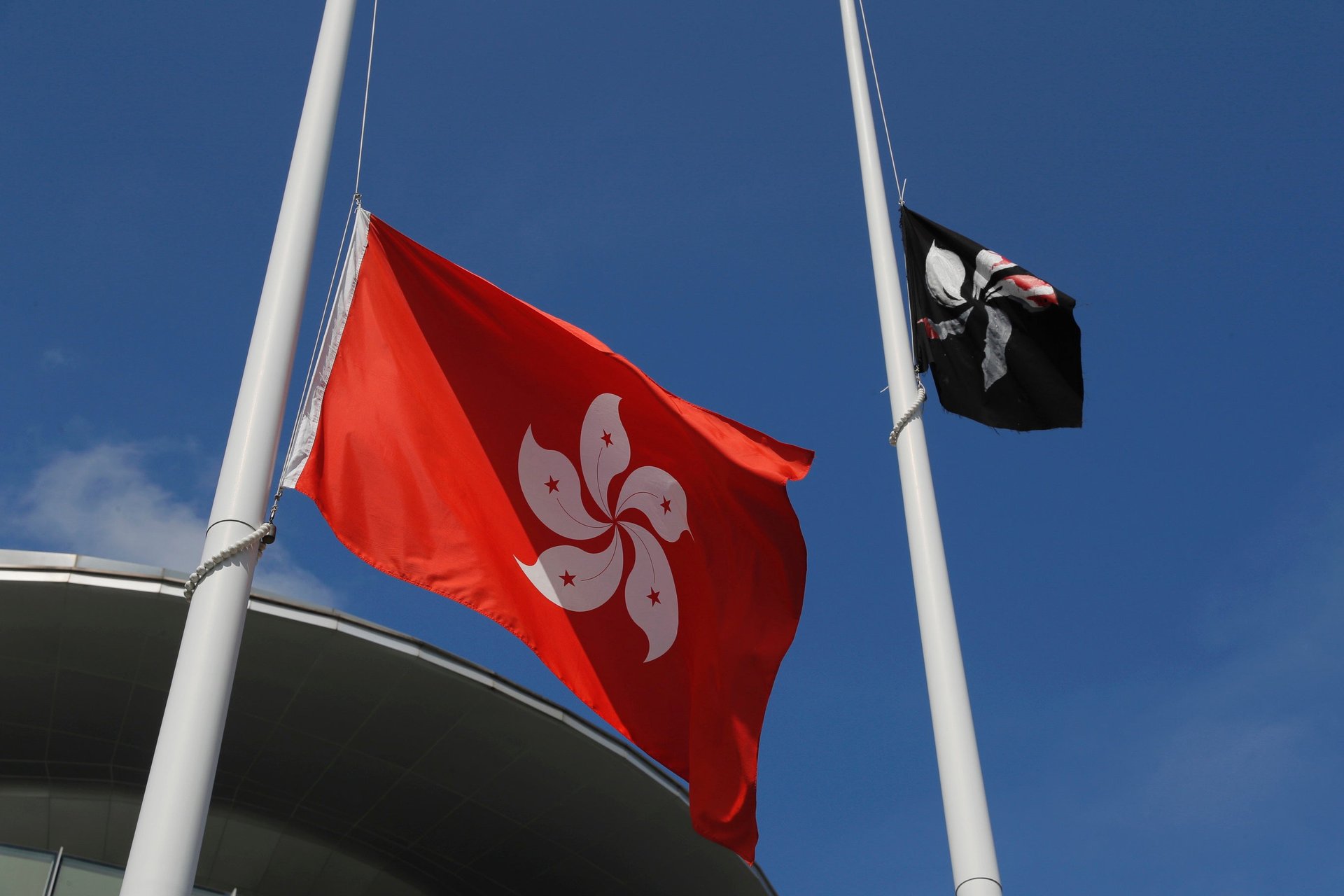
An annual demonstration that takes place on July 1 to mark the territory’s return to China from British rule in 1997 was this year boosted by protests against a bill that would have allowed extradition to mainland China from Hong Kong. Though the bill has been indefinitely suspended, thousands are calling for the resignation of Hong Kong chief executive Carrie Lam for her missteps over it.
Lam and other senior government officials called a press conference at 4am local time July 2, hours after police cleared out protesters from the streets surrounding the Legislative Council, or Legco, using tear gas. Lam strongly condemned the destruction carried out by protesters at the building as an affront to the rule of law, and held firm to her line that the decision to indefinitely suspend the extradition bill should be enough to allay people’s concerns that it could be re-introduced. Protesters want her to fully withdraw it, among other demands.
Questions also swirled around the role of the police during the Legco break-in, as they retreated from the building shortly before protesters successfully entered it. One lawmaker, Fernando Cheung, said that the police had laid a “trap” for the protesters, orchestrating a public display by vacating the premises. “They wanted this to happen. They wanted the public to see this,” he said.
Police chief Stephen Lo denied the accusations and said that the violent actions by protesters left them “no choice” but to retreat.
Earlier in the day, Lam, lawmakers, and Chinese officials attended a ceremony marking the anniversary of the handover with champagne, images of which were broadcast alongside those of riot police battling with demonstrators nearby. The South China Morning Post said the ceremony was the shortest and most subdued event yet, and unlike in past years, was moved indoors due to weather. In her first public appearance since apologizing to the city’s residents days after a massive June 16 protest, Lam pledged to be more responsive to the public’s demands.
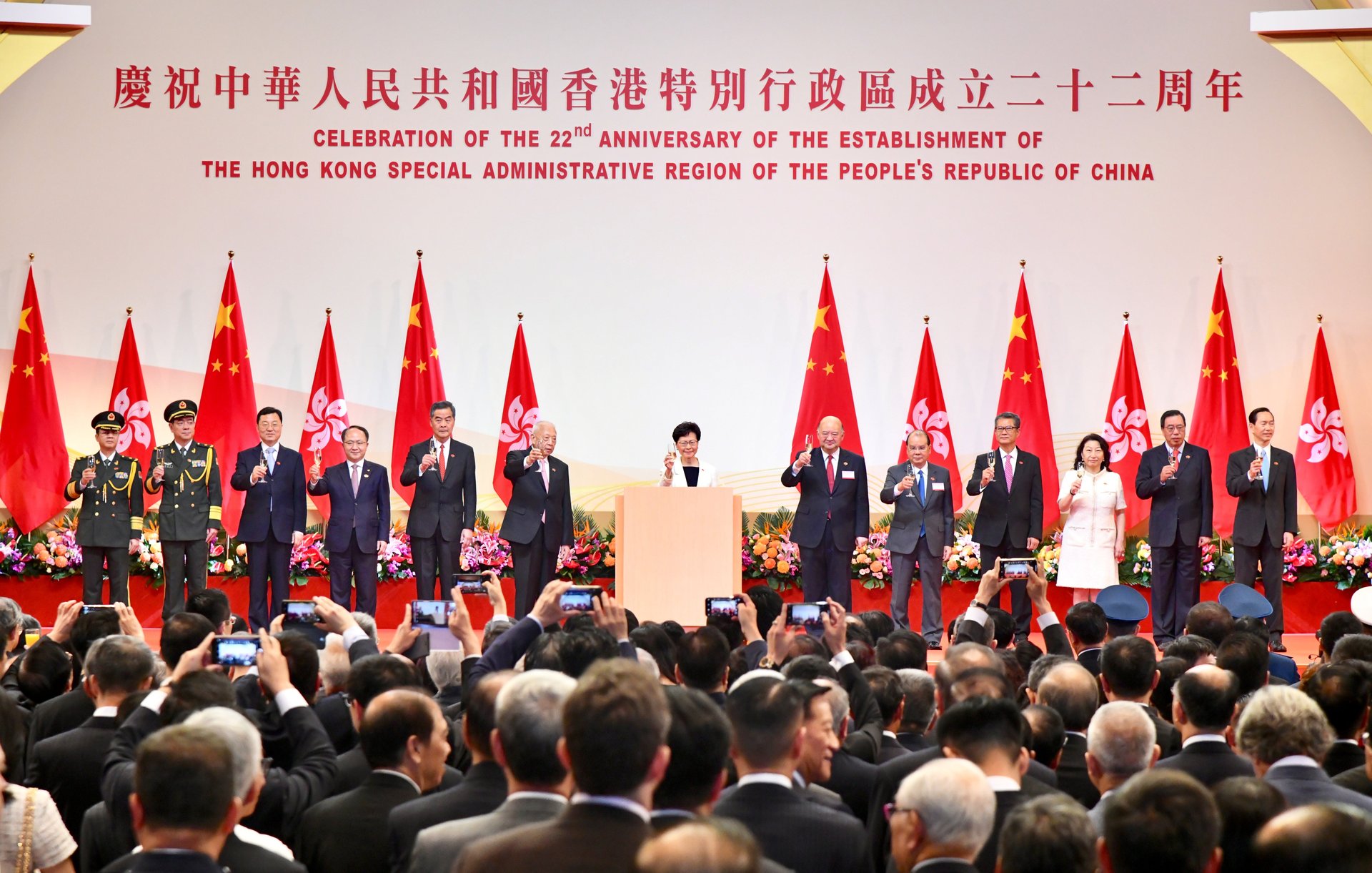
That ceremony came shortly after police broke up a protest that took place in the early hours of the morning near Legco, where they used batons to push back demonstrators and discharged pepper spray.
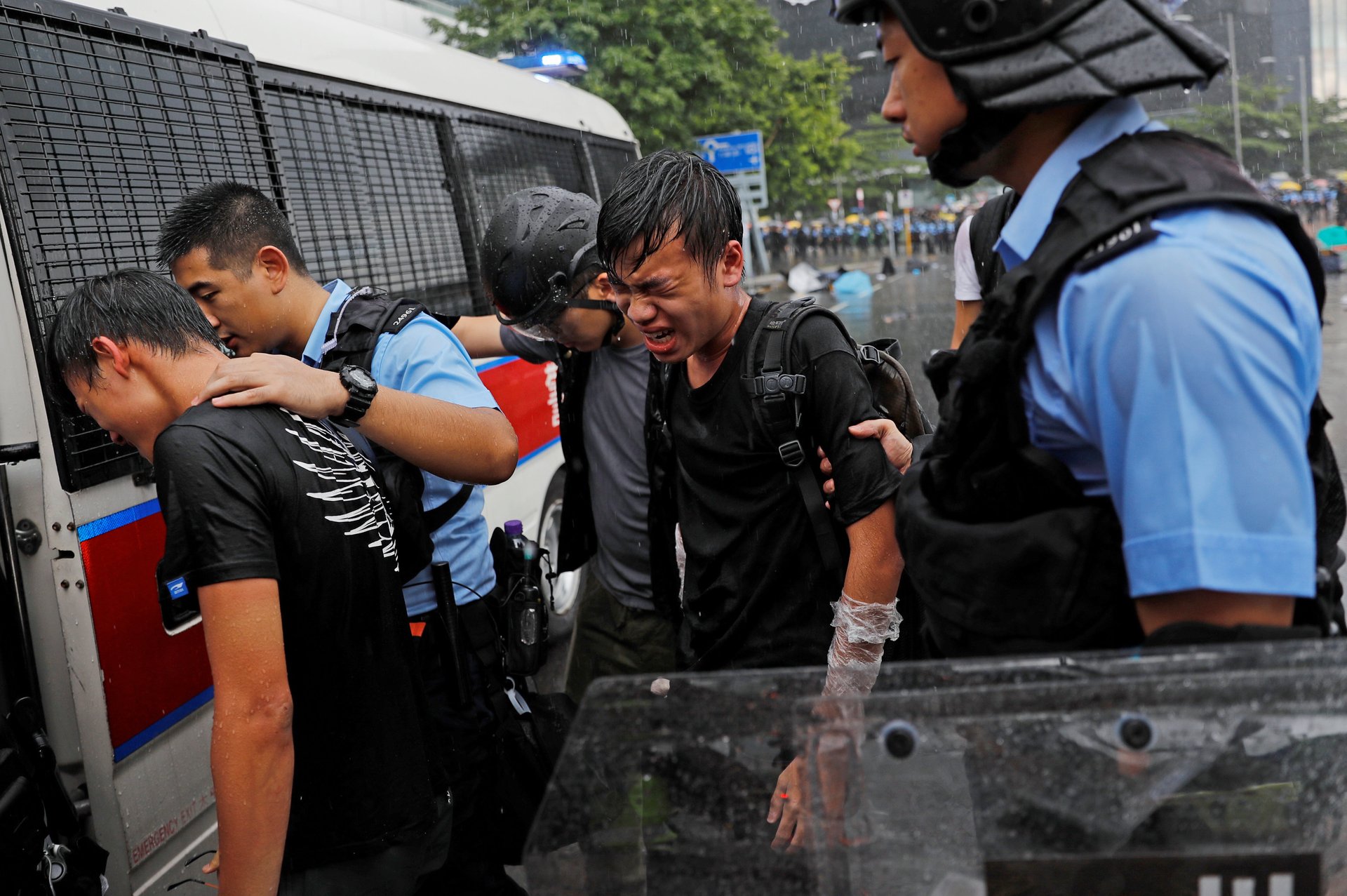
US president Donald Trump also weighed in on the events, and said that the protesters were “looking for democracy.”
Hong Kong was a British colony for 155 years before its return to China. A “one country, two systems” handover agreement granted the territory a “high degree of autonomy” until 2047. The extradition bill has raised growing fears about the erosion of democratic rights in the prosperous territory.
Many of the demonstrations have featured umbrellas, in a nod to 2014 pro-democracy protests, known as the Umbrella Movement, when protesters used them as a shield against pepper spray.
This story was updated with remarks from the chief executive and the police on the occupation of the legislature.